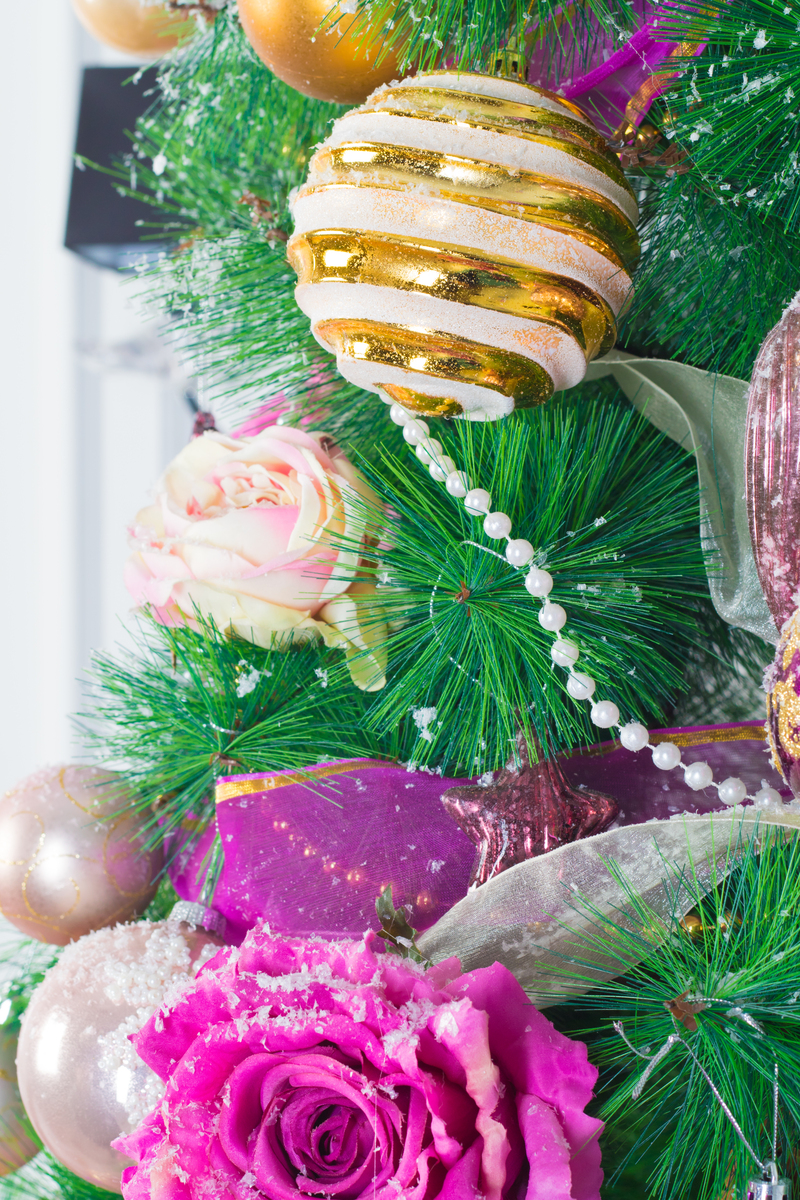Comprehensive Guide to Year-Round Hydrangea Care
Posted on 29/08/2025
Comprehensive Guide to Year-Round Hydrangea Care
Hydrangeas are one of the most beloved garden plants, cherished for their spectacular blooms, rich foliage, and adaptability. Whether you're a seasoned gardener or a beginner, ensuring healthy and vibrant hydrangeas all year requires attention, the right techniques, and a deep understanding of their needs. In this comprehensive guide to year-round hydrangea care, we'll walk you through essential tips, seasonal tasks, and advanced strategies to help your hydrangeas thrive in every season.
Understanding Hydrangeas: The Basics
Before diving into care routines, let's explore the basics of hydrangea plants. There are several popular types, each with unique characteristics and care requirements. The three main varieties include:
- Hydrangea macrophylla (Bigleaf Hydrangea): Known for large, round clusters of buds and the ability to change color based on soil pH.
- Hydrangea paniculata (Panicle Hydrangea): Features cone-shaped flowers, often white fading to pink.
- Hydrangea arborescens (Smooth Hydrangea): Includes the popular 'Annabelle' with giant, classic white bloom balls.
Understanding your hydrangea type helps in customizing year-round hydrangea plant care for optimal growth and stunning blooms.

Choosing the Right Location and Soil
Successful hydrangea gardening starts with the right location and soil preparation. Hydrangeas prefer:
- Partial shade: Morning sun and afternoon shade are ideal.
- Moist, well-drained soil: Avoid waterlogged areas, but do not let the roots dry out.
- Rich organic matter: Incorporate compost to boost soil nutrition.
Soil pH affects flower color for certain hydrangeas (notably Bigleaf). Acidic soils (pH below 6) encourage blue flowers, while alkaline soils (pH above 7) produce pink blooms. You can amend soil with sulfur to lower pH or lime it to raise pH, adding another layer to your hydrangea garden care strategy.
Spring Hydrangea Care Tips
As new growth emerges, spring is a vital time for hydrangea maintenance. Here's what you should focus on:
1. Pruning and Shaping
- Remove dead wood: Trim away broken or winter-damaged stems as buds begin to swell.
- Know your variety: Prune Bigleaf and Oakleaf hydrangeas *after* flowering since they bloom on old wood. Panicle and Smooth hydrangeas bloom on new wood and can be pruned in late winter or early spring.
2. Fertilizing Hydrangeas
- Apply a balanced, slow-release fertilizer as new shoots appear. Avoid excess nitrogen, which can promote leaves over blooms. For Bigleaf hydrangeas, use fertilizer formulations higher in phosphorus to promote blooms.
3. Mulching and Moisture Management
- Spread a 2-3 inch layer of organic mulch (such as pine bark or compost) around the base. This conserves moisture and suppresses weeds, two important aspects of comprehensive hydrangea garden care.
- Keep soil consistently moist but not waterlogged, especially if there is a spring drought.
Summer Hydrangea Care Strategies
Summer is when hydrangeas shine. Ensure their health and beauty with the following practices:
1. Watering Techniques
- Hydrangeas need at least 1 inch of water per week, often more during extreme heat or drought. Water deeply at the base to encourage deep root growth.
- Early morning is best--avoiding overhead watering reduces fungal issues.
2. Deadheading and Grooming
- Deadhead spent blooms to encourage fresh flowering and prevent the plant from wasting energy on seed production.
- Gently shape the plant if needed.
3. Pest and Disease Monitoring
- Watch for common problems like powdery mildew, aphids, and spider mites.
- Use horticultural oil or insecticidal soap as needed; remove any affected leaves if possible.
Proper summer care is essential to maximizing hydrangea blooms and sustaining the plant's vigor throughout the growing season.
Fall Hydrangea Maintenance
As days grow shorter, hydrangeas begin winding down. Support them for dormancy with these steps:
1. Stop Fertilizing
- Cease fertilizer application by late summer. This prevents new, tender growth that could be damaged by early frost.
2. Light Pruning and Leaf Cleanup
- Remove old flowers (if you haven't already) for tidiness.
- Clear fallen leaves or plant debris to reduce the risk of fungal diseases.
3. Soil Preparation for Winter
- Add a fresh layer of mulch to protect roots from freezing temperatures.
- For colder climates, mound extra mulch or use burlap to shield plants exposed to bitter winds--a crucial step in winter hydrangea protection.
Winter Hydrangea Care: Protection and Planning
The key to year-round hydrangea care is providing adequate winter protection to ensure your plants emerge healthy in spring. Here's how to safeguard your hydrangeas:
- Avoid heavy pruning--except for Panicle and Smooth varieties that bloom on new wood.
- In zones with harsh winters, wrap plants in burlap or use rose cones stuffed with leaves or straw.
- Water thoroughly before the ground freezes--hydrated plants are less susceptible to winter damage.
Winter is also a great time to plan and reflect. Assess your garden's performance, plan new layouts, and research new hydrangea cultivars for the year ahead!
Common Hydrangea Care Problems and Solutions
No guide to hydrangea maintenance is complete without troubleshooting. Here are common issues and effective remedies:
1. Leaf Browning or Wilting
- Cause: Underwatering or excessive midday sun.
- Solution: Water more deeply and ensure afternoon shade. Increase mulching to retain moisture.
2. Lack of Blooms
- Cause: Pruning at the wrong time, too much fertilizer, or bud winterkill.
- Solution: Prune only according to hydrangea type, cut back on high-nitrogen fertilizers, and protect buds in winter.
3. Flower Color Not Changing
- Cause: Soil pH not adjusted; some hydrangeas (like Panicle and Smooth) don't change color.
- Solution: Apply aluminum sulfate for blue flowers (acidic) or garden lime for pink blooms (alkaline), but only with Bigleaf and Mountain hydrangeas.
4. Fungal Diseases
- Cause: Overhead watering, high humidity, poor air circulation.
- Solution: Water at soil level, space plants for airflow, and remove affected leaves promptly.
Advanced Hydrangea Growing Tips
- Propagation: Hydrangeas can be propagated from softwood cuttings in late spring or early summer. Dip in rooting hormone, place in moist potting mix, and cover with plastic until roots appear.
- Companion planting: Pair with shade-loving perennials (like hosta or ferns) for a lush garden bed.
- Container hydrangea care: Use a large pot with quality potting mix. Water regularly and insulate containers in winter by wrapping or moving pots to a sheltered spot.
Frequently Asked Questions About Hydrangea Care
Can I grow hydrangeas indoors?
Most hydrangeas do best outdoors, though some compact varieties may be kept indoors if given bright, indirect light and moist soil. Rotate out of doors in spring and summer for best results.
How do I revive a wilted hydrangea?
Wilting is usually due to lack of water. Deeply soak the base of the plant, trim off any dead material, and consider transplanting to a spot with less intense midday sun if wilting is chronic.
When is the best time to transplant hydrangeas?
Early spring or fall is ideal, when temperatures are cool and the plant is not budding or flowering. Water thoroughly before and after moving.

Creating a Year-Round Hydrangea Care Calendar
Below is a sample calendar summarizing your annual hydrangea care schedule. Customize it according to your hydrangea type and local climate:
- Early Spring: Prune new-wood bloomers, fertilize, apply mulch.
- Late Spring-Early Summer: Water deeply, deadhead spent flowers, monitor pests.
- Mid-Late Summer: Continue watering and deadheading, reduce fertilizing.
- Early Fall: Stop fertilizing, tidy up leaves, prep soil for winter.
- Late Fall-Winter: Apply winter protection, plan garden updates.
By adhering to this annual hydrangea maintenance guide, you'll dramatically improve the resilience and beauty of your garden's hydrangea collection.
Conclusion: Enjoying Year-Round Hydrangea Beauty
Year-round hydrangea care doesn't need to be overwhelming. With the right knowledge about varieties, soil, seasonal routines, and troubleshooting, you can enjoy abundant blooms and healthy plants throughout the year. Remember, healthy hydrangeas reward gardeners with not only vibrant flowers but also lush, beautiful foliage--making regular hydrangea care a rewarding endeavor for any plant lover.
For more tips and the latest trends in hydrangea gardening, check with your local university extension, botanic garden, or community gardening group to learn about region-specific hydrangea care and new cultivars.
Start your journey today and transform your garden with spectacular hydrangeas--every season, every year!
Latest Posts
The Language of Flowers: Red Roses on Valentine's Day
The Enthusiast's Guide to Orchid Upkeep
The Language of Flowers: Red Roses on Valentine's Day






